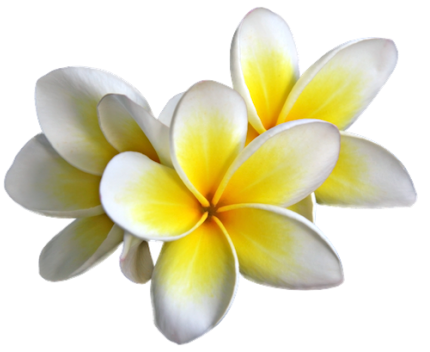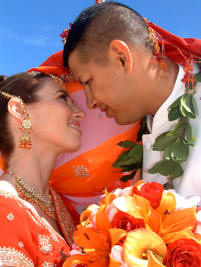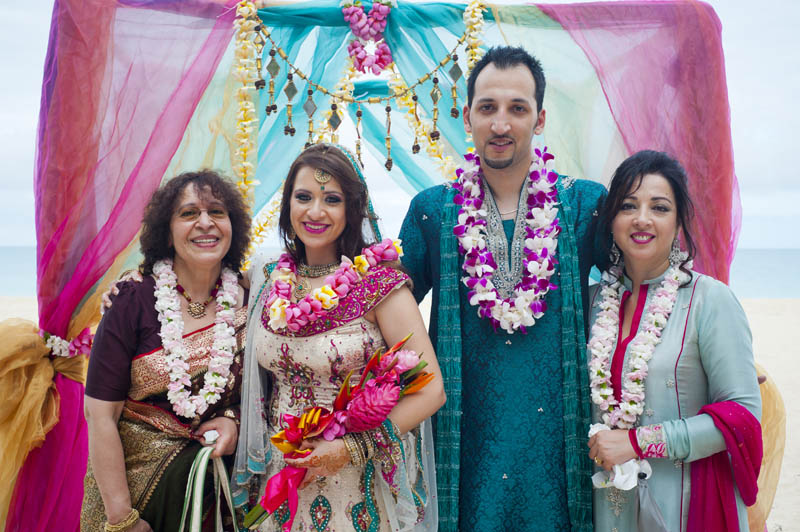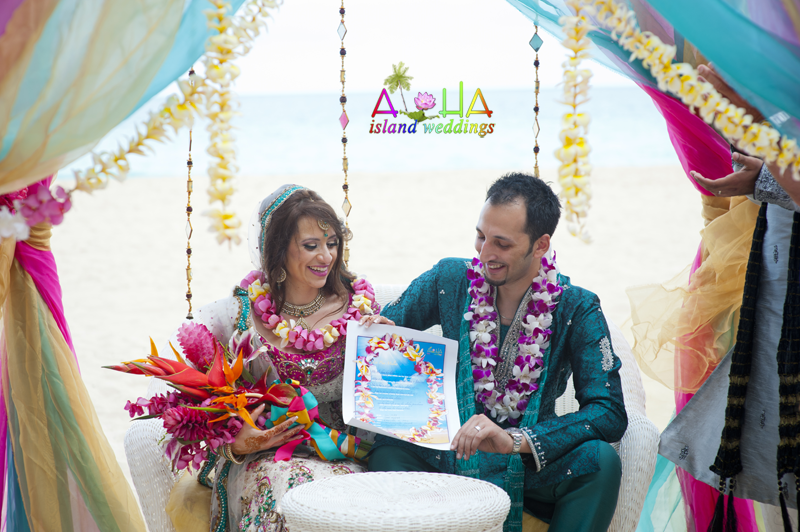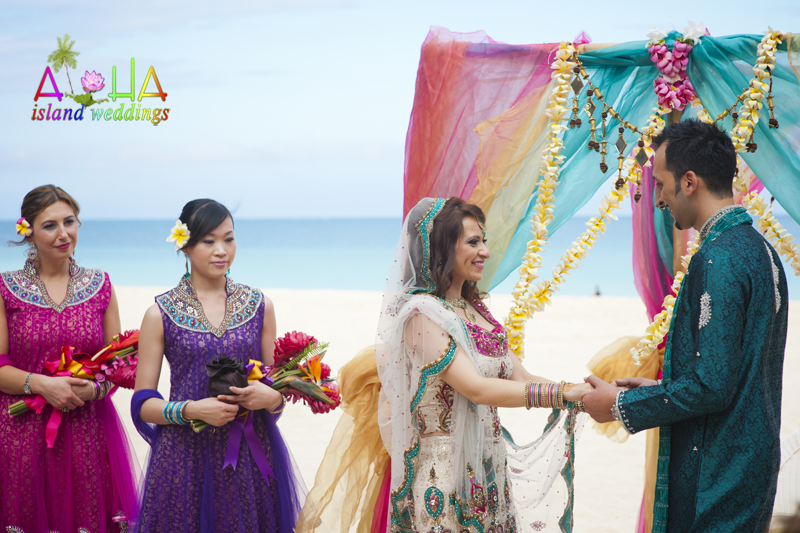The Grace and beauty of traditional weddings from India
India Wedding Dresses – Grooms’ Dresses
You could tell the exact origin of Indian grooms’ by looking at their wedding dresses till very recently. Secondly, grooms’ dresses are not as exquisite and elaborate as brides’ dresses, perhaps common to every community in the world.
North Indian grooms wear Sherwani-Chudidar and a dupatta to hang from the neck. Sherwani is a closed collar coat long enough to drape down till knees. Wedding sherwanis are of silk either embroidered all over the body or just along the front, around the collar and sometimes around the cuffs. Chudidars are tight fitting plane silk trousers with no particular preference of color as long as they well with sherwanis. Sherwanis are worn over tees or cotton kurtas or shirts and the choice of color is more or less red, maroon or magenta particularly because of its ability to contrast the embroidered zari work.
Grooms’ dress is incomplete without the ‘pheta’ (turban) and a pair of completely embroidered ‘mojdi’ mules almost always pointed and curved upwards at front. Mojdis contrast chudidars in color. The headgear or pheta is what helps identify regional and cultural differences across Northern India. In olden times, grooms’ attendants used to wrap long (6-9 yards) silk or starched cloth around groom’s head on the day of wedding but given the difficulty and lack of experts who can tie phetas, grooms prefer wearing readymade phetas available at wedding boutiques.
One significant thing about phetas is that it is the only common wedding dress for grooms across India even though there are differences in wearing styles. The most notable styles are Rajasthani, Punjabi and Mysore styles.
wedding is nothing short of a high voltage fashion show of sorts, particularly if you look at the bridal costumes and the number of times they change during the wedding. This apparently brings another point to fore that grooms’ wedding dresses pale into nothingness in comparison, although there are a few regional exceptions.
Sari, a 6-yard long (sometimes 9-yards in South Indian weddings) cloth, is worn wrapped around the body in a particularly intricate fashion with a blouse (choli) on top for the India wedding dress. The normal fashion to wear a sari is to have lots of pleats/folds plunging down the waistline in the front with one end tucked firmly in while the other end (pallu) is slung over a shoulder. Bridal sari, almost invariably will be woven in rich dual tone silk and gold or silver. Wedding sari has three distinct areas, particularly for decorating it– the bottom border, the body and finally the highly decorated ‘pallu’ (shawl like end) which is slung over the shoulder or passed over as a head cover, depending on the regional tradition. The decorations (zari work) on border and pallu are exquisite and intricate and usually in silver embroidery, gold embroidered saris are far less common these days. North Indian wedding saris are predominantly of Benarsi style which emphasizes more on elegance in contrast to southerners who prefer either Dharmavaram or Kanjivaram saris which place emphasis on brighter colors.
While sari and choli form the most common bridal wedding dress in India wedding customs, Salwar-Kameez is the preferred wedding dress by Punjabis, Kashmiris and Muslims. Salwar, loose fitting pleated trousers is worn under a Kameez, a long collarless shirt or tunic. The side seams of Kameez are left open below the waistline to facilitate free movement. Needless to say, like sari and blouse, salwar and kameez suit will also be in silk with salwar usually having floral patterns woven with silver all over the body. ‘Dupatta’ (shawl/a rather light scarf with resplendent zari work) forms the third component of salwar-kameez; it is worn around the head on a wedding day.
Indian brides change saris twice during the course of the wedding to mark two significant events this
Indian wedding tradition ; the first time, just after ‘Kanyadaan’, a ritualistic handing over of the bride to the groom and next, before the wedding reception hosted by the grooms’ party. Except for the first sari, both the saris are presented to her by the groom’s parents. The reception sari is worn rather in a formal fashion although it is not inferior in any way to the other two saris.
Bride and her ‘Maid of Honor’ are involved in the purchase of all saris. To say the least, saris matter a lot in an Indian wedding, and a number of them are exchanged between the parties as a mark of honor.
